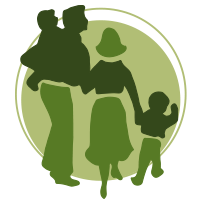My first experiences of back problems were typical – limping around, grimacing, going to the GP a few times, being made to feel like a hypochondriac. Eventually after looking at an x-ray report the GP told me something was a “funny shape” and I should do lots of exercise. Actually, he wasn’t wrong, but the explanation was lacking and walking was an effort just then, let alone exercise. It was at that point I decided to take matters in to my own hands.
I tried a few practitioners before I ended up seeing a chiropractor who looked at the very same x-ray and then she explained it to me. She showed me the funny shaped joint, she explained the impact on my back, she treated the problem, she introduced me to Pilates.
So far, so good. But then another problem came up and it didn’t respond to treatment. Another chiro at the clinic took a look (this was the first time I met Tone!) and the two between them agreed there was something else going on. They wrote a letter to my GP – a different GP by now – I went to see him and he was wonderful. Within a week I’d had a blood test, been prescribed anti-inflammatories (which at that stage seemed miraculous) and seen a specialist. I was eventually diagnosed with Ankylosing Spondylitis (AS) – a form of arthritis that mainly affects the spine.
Over 10 years and 2 children later (pregnancy/young children = back problems), I feel like learned a few things. Here are my top tips:
- Take control
It’s very easy to feel like a victim when you’re suffering from a lot of pain. The sooner you realise that the only person who really has an interest in sorting it all out is you, the better. Make a real effort to get informed: read books, get on the internet, talk to other people. And don’t give yourself a hard time on the days when it does all get too much. . - The right treatment from the right person
It’s not just about the right treatment for you, it’s also about the right person for you. The most successful treatments are from individuals with whom you feel comfortable. - Experiment
The frustrating thing with back problems is that everyone is different and no-one is likely to be able to give you conclusive diagnosis or perfect treatment. Nothing is set in stone. My rheumatologist told me chiropractic wasn’t good for people with AS. Ten years later, I beg to differ! In the end I’ve managed my condition with a combination of chiropractic, exercise (mainly Pilates and swimming), massage, prescription drugs, occasional acupuncture, investment in a great mattress and learning how to sit.
Try different things and in different combinations. If after a while things aren’t working, make a change. At one point chiropractic wasn’t shifting a particular problem so I stopped seeing Tone and went to see an osteopath/acupuncturist. It felt rather like being unfaithful. However he did shift the problem and I soon went back to Tone because I prefer her holistic approach. - You may feel worse before you get better
Don’t necessarily worry or be put off by a treatment if you feel sore, achey or washed-out immediately afterwards. The first time I had a really good therapeutic massage I felt bruised and beaten up for two days. The third day I walked without a limp for the first time in three months. - Exercise, exercise, exercise
Why is it so difficult to find 30 minutes a day to do exercises? I never seem to manage it. But I know full well that if I was stricter about it I would have less problems. And I tell myself that if things are hurting and I’ve been slacking then it’s my own fault. Keeping my joints flexible and the muscles supporting my spine strong are the best options I’ve got for a pain-free life.
For more info, visit www.nass.co.uk – National Ankylosing Spondylitis Society



